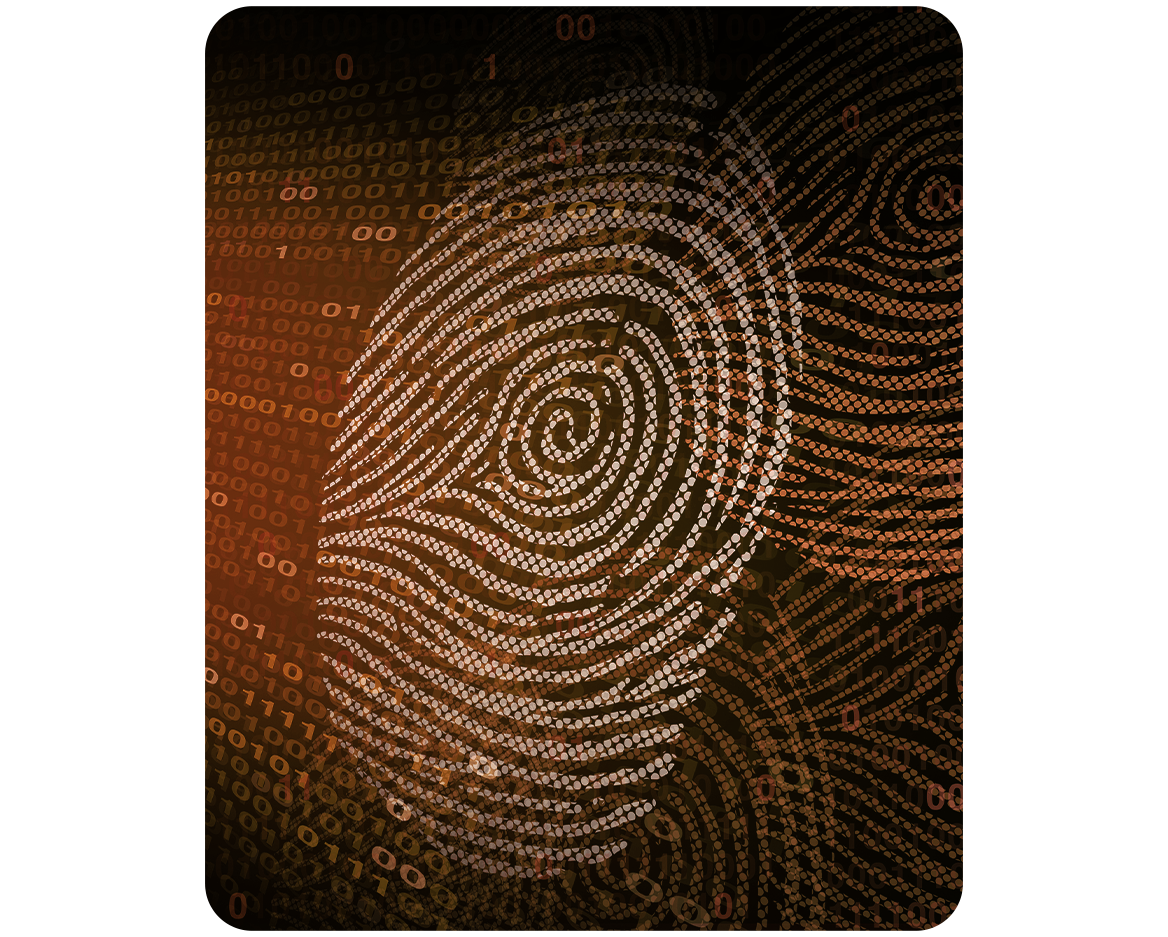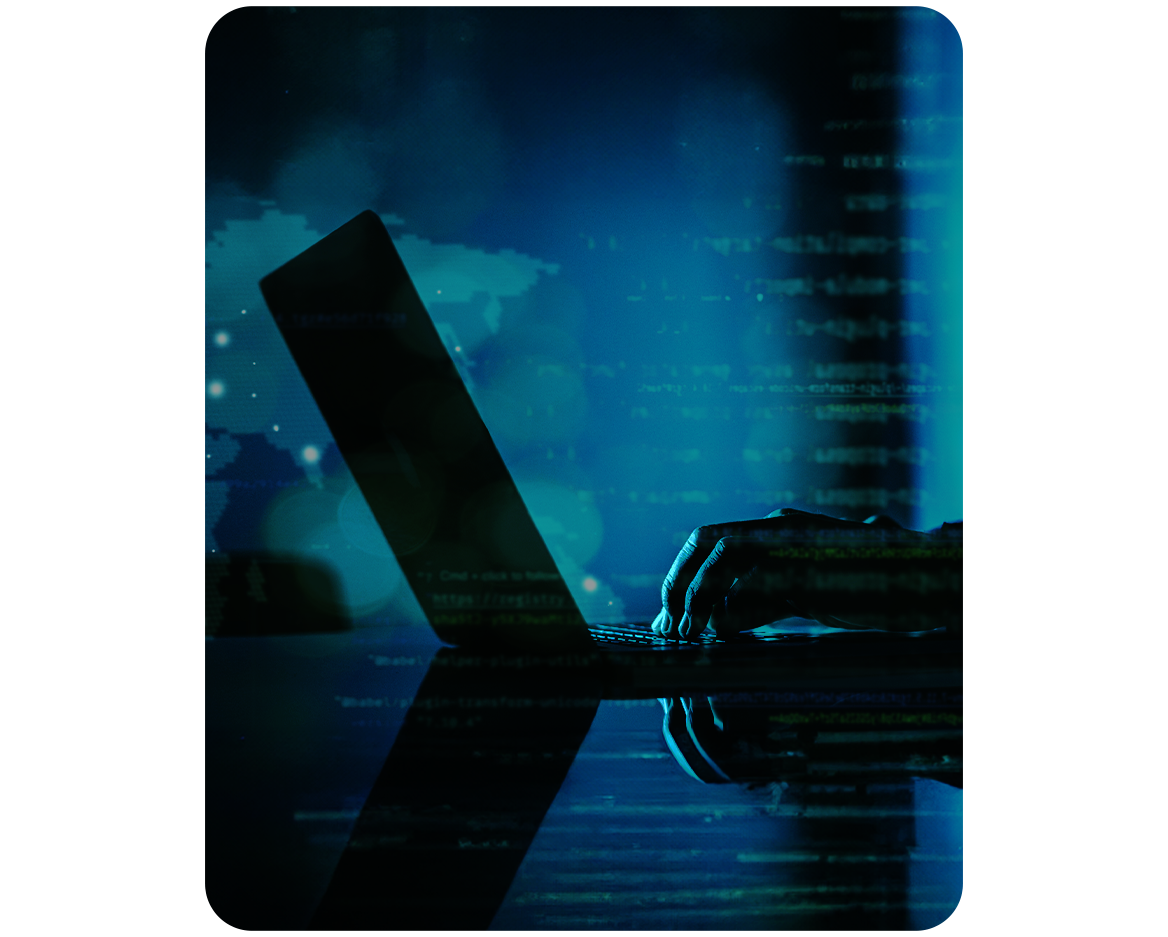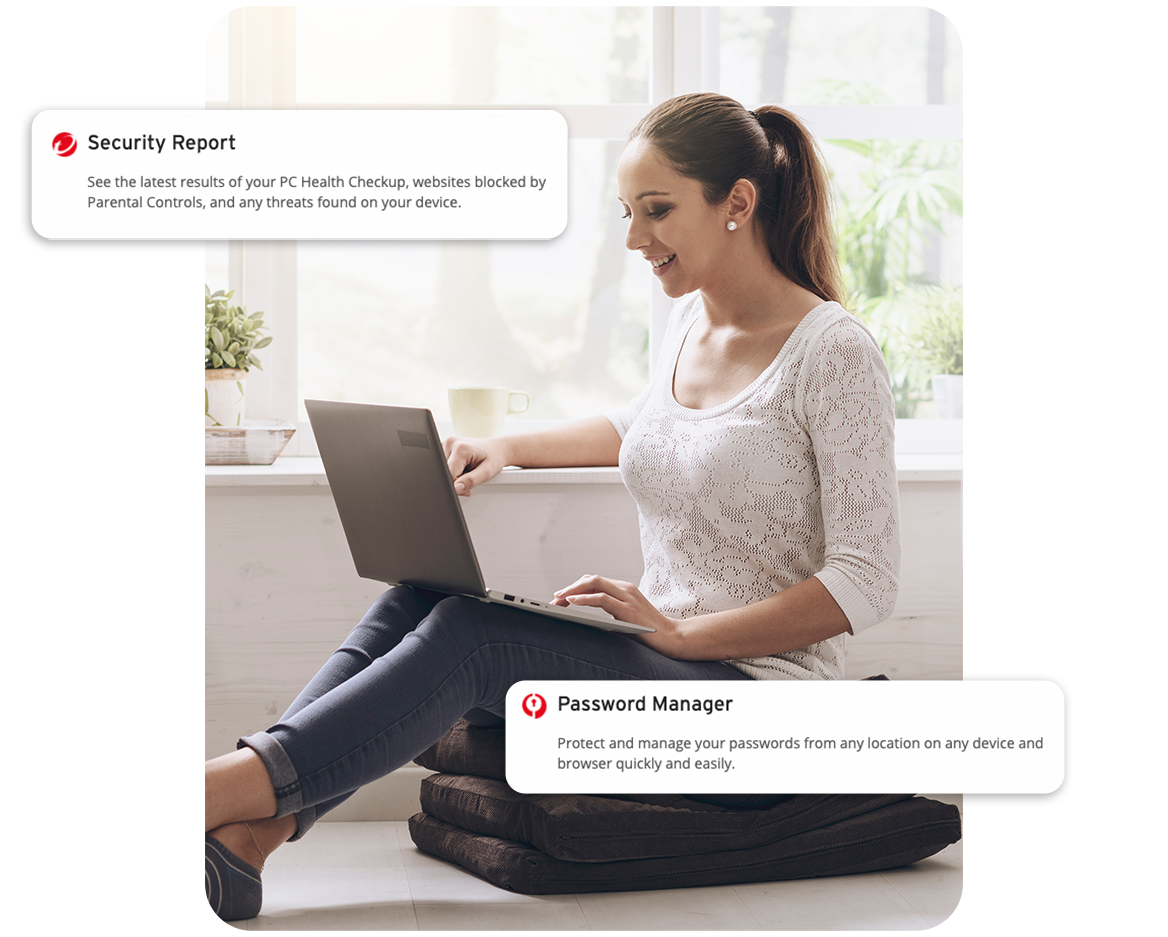-
Top Features
- Anti-tracking
- Social Media Account Monitoring
- Web Threat Protection
- Personal Data Leak Check
- Password Generator
- Password Manager
- Dark Web Monitoring
- Wi-Fi Checker

Identity Theft
Identity theft is the unauthorized use of someone's personal information, usually for fraudelent purposes. This also includes stealing sensitive information such as Social Security numbers or credit card numbers to commit financial fraud or assume another person's identity. With the rise of digital transactions and online interactions, identity theft has become a major concern, resulting in financial losses and significant disruptions to victim's lives. Preventative actions and increased awareness are critical in combatting this widespread type of cybercrime
What are types of Identity Theft
Identity theft can take several forms, each targeting a different aspect of an individual's personal information. Some common types of identity theft include:
- Account takeover fraud is a devious form of online identity theft in which a criminal gains unauthorized access to someone's digital accounts and impersonates them for fraudulent purposes like stealing money or sensitive information.
- Financial identity theft occurs when criminals steal and misuse private financial data such as credit card numbers or bank account details to make unauthorized purchases or take out loans under the victim's name.
- Medical identity theft occurs when criminals utilize pilfered personal health data, such as insurance particulars or medical records, to fraudulently access healthcare services, prescriptions, or insurance benefits in the victim's name, without their authorization or knowledge.
- Child identity theft involves the theft of a minor's personal data like their Social Security number to illegally open accounts or file for government benefits, often going undetected for years and causing legal and financial difficulties later in the child's life.
- Synthetic identity theft is an intricate form of fraud where criminals combine real personal data such as Social Security numbers with fabricated information to generate new identities and open fraudulent accounts that can be challenging to uncover.

What is data breach
A data breach is a digital break-in in which hackers or unauthorized individuals get access to sensitive information held by a company or organization.
This may include personal information such as names, addresses, or financial information. Imagine someone sneaking into a secured room and searching through files without permission. Data breaches can result in identity theft, financial loss, and privacy concerns for anyone whose information is compromised.

What is the Dark Web
The dark web is the hidden part of the internet. It makes up approximately 5% of internet content, and is part of a much larger area known as the deep web, which conversely makes up a huge 90% of the internet. The dark web, which can only be accessed via specific browsers, is a series of websites that require specific authorization to enter. Dark websites allow users unparalleled anonymity due to encryption software such as the Tor (short for The Onion Router) browser. Unlike the surface web, the dark web does not use information available on search engines like Google or Bing; instead, it utilizes content from individual sources: forums, email, social media, and company databases. These features are why the dark web is an enticing place to do business for criminals.
To mitigate risks associated with the dark web, individuals and organizations employ dark web monitoring services, which continuously scan this clandestine realm for any mentions of compromised information, providing timely alerts to preempt potential cyber threats.

Identity Theft Protection
Protecting yourself from identity theft requires a comprehensive approach, and incorporating dark web monitoring can bolster your defenses. Start by implementing strong password practices and using unique passwords for each online account. Regularly monitor your financial accounts and credit reports for any unusual activity, which can be an early indicator of identity theft. Stay vigilant against phishing attempts by never sharing personal information in response to unsolicited requests. Dark web monitoring services add an extra layer of security by continuously scanning the dark web for any mentions of your personal information. If your data is detected, you'll receive immediate alerts, enabling you to take prompt action to mitigate potential risks. Additionally, consider enrolling in identity theft protection services that offer comprehensive monitoring and assistance in case of identity theft. By combining proactive measures with dark web monitoring, you can significantly reduce the likelihood of falling victim to identity theft and minimize its potential impact.
Safeguard against identity theft and protect your privacy
-
Top Features
- Anti-tracking
- Social Media Account Monitoring
- Web Threat Protection
- Personal Data Leak Check
- Password Generator
- Password Manager
- Dark Web Monitoring
- Wi-Fi Checker
Turns any public hotspot into a secure WiFi via Virtual Private Network (VPN)
-
Top Features
- Turns public hotspot into a secure WiFi connection via Virtual Private Network (VPN)
- Encrypts communication once connected to ensure privacy
- Blocks dangerous and malicious websites
- Protection for PC, Mac, iOS and Android devices
-
Top Features
- Turns public hotspot into a secure WiFi connection via Virtual Private Network (VPN)
- Encrypts communication once connected to ensure privacy
- Blocks dangerous and malicious websites
- Protection for PC, Mac, iOS and Android devices
-
Select Product
Selecting the right product for your online protection. Tailored to meet your specific needs.
-
Choose Plan
Choose your plan that reflects how many devices and how long you want to protect.
-
Login/Register
Take the first step towards a more secured digital life and peace of mind by registering today.
-
Make Payment
We offer a variety of secure payment methods to make your payment process convenient and hassle-free.
Trend Micro Security Products Customer Reviews
It is a good system and appears to cover all aspectsI have been with Trend Micro for quite a number of years and my computer and mobile devices have been well-protected and no invasions by hackers [nor] other infiltrators have [since] occurred. Being an aged person without an IT background, I have called technical support service a number of times and received all the time and assistance needed. Your technicians are always helpful and understanding.
Bill Goodie - 3 months ago
Good quality productI have been a Trend Micro customer since 2013. In that time, I have never been attacked by any malicious software [nor] infected with harm-causing software. I have been warned a number of times that particular websites were potentially dangerous and should be avoided. I have never had any cause to question what the Trend Micro software was doing, as it went about its business of protecting me. The four other systems that are protected by my licensed version of the software have never had their computers compromised.
woodsie13 - 5 months ago
Fool-proof protectionI have been with Trend Micro for years now and have never had a problem. From the first installation which was easy, to annual renewals—the processes have been simple. I have three devices protected and it gives me peace of mind. I would highly recommend this product.
wall - 5 months ago
Great all round protectionHave been purchasing this for many years, never had an issue with [it]. So easy to purchase, download, install, run, and protect my IT equipment and software, truly cannot fault at all.
Goldi - 5 months ago
Easy and complete protectionI have used your product for over 3 years and have had no issues. [It is] easy to load, and easy to use. I have seen it disrupt various attempts of viral attacks against my machine, it gives me great confidence.
Swampwitch - a month ago
Peace of MindI have been using Trend Micro since the 1990's when my PC had 500meg of hard drive and 32 meg of ram. In recent years, I have purchased the multiple 2 year product to ensure all my devices are protected, as well those of my family. I have never used any other product as extremely satisfied with Trend Micro protection.
Greeny - a month ago
Why Buy from the Official Trend Micro Store?
 Latest Products & Offers
Latest Products & Offers
Get the latest deals across our entire range of security products for all your internet-connected devices.
 Simple & Easy
Simple & Easy
Buying online is only a few clicks away. If you require help, our online support is available 24x7 via email or chat.
 Total Peace of Mind
Total Peace of Mind
Stay continuously protected with the latest version and automatic renewal on checkout — removing the hassle of renewing manually every year.
Why do you need Trend Micro Antivirus?
Trend Micro has the highest quality solutions and the best security protection, as recognised through awards by independent tester AV-Test since 2003.
Dedicated to assuring 100% customer satisfaction. Our security experts are ready to assist you 24x7.
Thirty years of experience and innovation guarantees only the best internet security and antivirus protection.
Enjoy a 30-day money-back satisfaction guarantee when you purchase through the Trend Micro online shop.
Get Advanced Protection with
Trend Micro Security Suite Pro Plus
If you’re looking for advanced antivirus protection with anti-scam software and identity theft protection, consider Security Suite Pro Plus. It provides full device and identity safeguarding for PC, Mac, smartphones and tablets.
Highlights of Security Suite Pro Plus include:
- Protect PCs, Macs, mobile phones and tablets
- Antivirus, malware, ransomware, & spyware protection
- Guard against identity theft with dark web monitoring
- Anti-track and Ad-blocker to stop third parties from collecting your data
- Protect and manage passwords
- Keep children safe online
- Secure VPN to protect your privacy
- Anti-scam to detect AI scams, warn users of deepfake scams during video call, filter spam texts and block unsafe websites
- 24x7 unlimited technical support and emergency assistance
Subscribe now

Maximum Security
Mobile Security
ID Protection
VPN
Trend Micro ScamCheck
Frequently Asked Questions
While accessing the dark web is legal, it has garnered a reputation for hosting illicit content and activities. Cybercriminals frequent this space to trade stolen credentials like credit card numbers, email addresses, passwords, and Social Security numbers. Apart from identity theft, it serves as a hub for various criminal endeavors, including the trafficking of illegal drugs, trading in malware, weapons, counterfeit goods, prostitution, human trafficking, money laundering, and illegal pornography. In essence, while the dark web itself is not inherently illegal, the majority of activities conducted within it are unlawful.
According to Constella’s 2021 Identity Breach Report, over 12 billion personal records were exposed in data breaches throughout 2020. These records are often sold among criminals or exposed on the dark web for exploitation.
- Exercise caution. Take care when divulging personal details online. Just because a website requests information doesn't necessitate its provision. Inquire about the requester's identity and purpose. Additionally, minimize the personal data shared on social media.
- Exercise discretion. Exercise caution before clicking on links or opening email attachments. If from an unfamiliar sender, refrain from opening them.
- Utilize secure Wi-Fi networks. Ensure secure wireless connections when engaging in online shopping or banking. Consider using a Virtual Private Network (VPN) to encrypt your data and safeguard your online activities.
- Permanently remove files from your device. Merely placing files in the recycle bin isn't sufficient, as they remain accessible to identity thieves. Use security software equipped with a digital shredder to thoroughly erase files from your PC.
- Install comprehensive security software. Ensure all your devices are equipped with a comprehensive security software that safeguards PCs, Macs, tablets, and smartphones.
Dark web monitoring is a cybersecurity solution that entails scouring the dark web for your sensitive information and personally identifiable information (PII). It serves as a key component in safeguarding against identity theft, enabling proactive responses to data leaks before harm occurs. This service operates by conducting daily scans across numerous websites, including marketplaces, forums, and chat rooms, to detect any instances of your information. Upon detection, you receive alerts, empowering you to take prompt action to mitigate potential risks.
Several signs may indicate that your identity has been stolen:
- Suspicious Activity on Social Media: Unusual activity, such as unauthorized posts or messages, could indicate that someone has gained access to your accounts.
- Missing Mail or Bills: Your regular mail or email statements cease.
- Unexplained Transactions: Unrecognized purchases appear on your credit card statement, even small ones. Criminals often initiate with minor purchases before escalating.
- Errors on Your Credit Report: Your credit report contains suspicious entries, such as inquiries for credit that you did not initiate.
- Received Notices of Data Breaches: If you receive notifications about data breaches from companies you've interacted with, your information may have been compromised.
- Unexpected Credit Denials: Despite having a high credit score (as per your last check), you are denied credit for a loan or new credit card. Identity theft can easily tarnish a credit rating.
Discovering that your identity has been stolen can be a stressful experience. Begin by taking a deep breath and following these initial steps:
- Contact your local or national law enforcement agency to file a report regarding the identity theft.
- Notify your bank and credit card companies of the fraudulent activity. They may be able to reimburse you for any losses or close unauthorized accounts.
- Check your credit report with credit reference agencies. You are entitled to one free copy of your credit report every 12 months from each of the three nationwide credit reporting companies. This allows you to check if anyone has attempted to obtain credit using your name.
- Keep detailed records of all conversations and paperwork related to the identity theft. Organize your information into a centralized location. This documentation can serve as evidence for your case and assist you in resolving the complications that may arise from identity theft.



